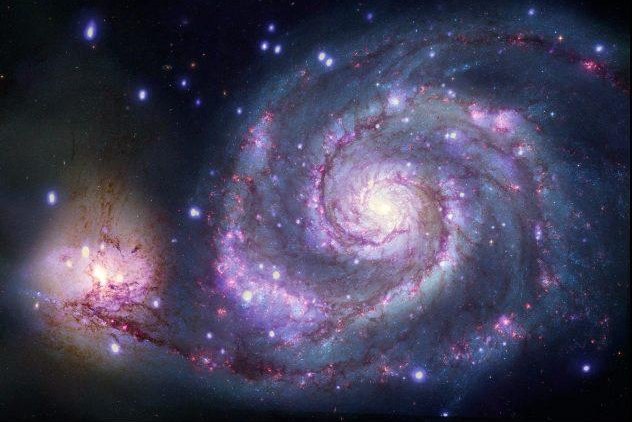[ad_1]
The doable new exoplanet was found in Messier 51, also called the Whirlpool Galaxy, about 28 million light-years from Earth. Picture courtesy of NASA/CXC/SAO/R. DiStefano/ESA/STScI/Grendler
Scientists could have positioned a brand new planet — one which’s not solely outdoors of our photo voltaic system, but in addition our galaxy.
The exoplanet candidate is positioned in Messier 51, also called the Whirpool Galaxy, and was detected by the Chandra X-ray Observatory, NASA introduced.
If the celestial physique is confirmed as an exoplanet, it might be the primary one to be found outdoors the Milky Approach.
All different exoplanets discovered have been positioned lower than 3,000 light-years from Earth. The brand new discovery is 28 million light-years away.
To seek out the exoplanet candidate, scientists used a brand new technique of looking out that relied on in search of the celestial our bodies at X-ray wavelengths.
“We are attempting to open up an entire new space for locating different worlds by trying to find planet candidates at X-ray wavelengths, a method that makes it doable to find them in different galaxies,” stated Rosanne Di Stefano of the Middle for Astrophysics, who led the examine printed in Nature Astronomy on Oct. 25.
The method lies in figuring out an object’s transit, or its passage of a planet in entrance of a star, which blocks among the star’s gentle and produces a “attribute dip,” the NASA assertion defined.
Whereas in search of dips in optical gentle has helped discover 1000’s of planets, Di Stefano and colleagues as a substitute seemed for dips within the brightness of X-rays acquired from binary techniques shiny with X-rays, or techniques with two stars that normally comprise a neutron star or black gap pulling in gasoline from the companion star, in response to NASA.
Supplies close to the neutron star or black gap develop into superheated and glow in X-rays in a confined space, so when a planet passes in entrance of it, the planet may block most or the entire X-rays.
This technique may enable scientists to find exoplanets at larger distances than present optical gentle transit research, NASA stated.

NASA’s Spitzer House Telescope exhibits the Whirlpool Galaxy, the place scientists say they’ve discovered a doable new exoplanet. The possibly historic discovery, nevertheless, can’t be confirmed for about 70 years. Picture courtesy NASA
Throughout the binary system M51-ULS-1, positioned in M51, a neutron star or a black gap orbits a companion star believed to have a mass about 20 occasions that of the solar. It was on this system the place an X-ray transit lasted about three hours, lowering the X-ray emissions to zero.
This and different data led researchers to estimate the exoplanet candidate to be roughly the dimensions of Saturn, orbiting the neutron star or black gap about twice the gap of Saturn from the solar.
Nevertheless, it is anticipated to take no less than 70 years to verify if the exoplanet candidate is definitely a planet as a result of scientists should wait to see if it completes an orbit.
“Sadly, to verify that we’re seeing a planet we’d probably have to attend a long time to see one other transit,” stated co-author Nia Imara of the College of California at Santa Cruz. “And due to the uncertainties about how lengthy it takes to orbit, we would not know precisely when to look.”
Researchers contemplate it unlikely that the dimming was attributable to a cloud of gasoline and mud passing in entrance of the X-ray supply, as the info is extra in keeping with the mannequin of a planet candidate.
“We all know we’re making an thrilling and daring declare so we anticipate that different astronomers will have a look at it very fastidiously,” stated co-author Julia Berndtsson of Princeton College in New Jersey.
“We predict now we have a powerful argument, and this course of is how science works.”
The Worldwide House Station is pictured from the SpaceX Crew Dragon Endeavour throughout a flyaround of the orbiting lab that occurred following its undocking from the Concord module’s space-facing port on November 8. Picture courtesy of NASA
[ad_2]
Supply hyperlink

